If you’re in the market for a takedown recurve bow, whether it’s your first or an upgrade, this article is tailored for you.
With four years of hands-on experience in barebow archery, I’ve learned the ins and outs of what makes a takedown bow reliable and effective.
I’ll cut through the clutter and present you with the top choices that have stood out in my practice, along with straightforward advice to help you select a bow that aligns with your skill level and shooting needs.
Let’s dive straight into the essentials and find the right bow for you.
+ BEAR ARCHERY BULLSEYE (Package). Perfect youth takedown bow available with 15 or 26 lbs draw weight. Sturdy, lightweight multi-laminate. Right-handed archers only.
___________________
+ KESHES Takedown Bow 62″ from 15-60lb. draw weight available. Perfect for beginners. From the same manufacturer as the well-known Samick Sage Bow
___________________
+ SOUTHWEST ARCHERY SUPPLY Voyager 62″. Aluminum Riser, for right- and left-handed archers. Beautiful bow, Bow length is 62″. Draw weight from 25 to 55 lbs.
___________________
+ CABELAS Warden – 62″ Takedown Bow. Beautiful takedown bow available with 45 or 55 lb draw weight.
___________________
+ BUDGET FRIENDLY! SAS COURAGE Beautiful takedown bow with a wooden riser. Available from 29 to 60lb. draw weight, RH or LH 60″ total length.
“Did you know that according to research done by the OUTDOOR FOUNDATION, 31% of all bowhunting done in 2021, 31% used traditional bows?”
Source: 2022-Special-Report-on-Hunting-The-Shooting-Sports




Contents (Jump to Topic)
ToggleAt a Glance: The 5 Best
Recurve Bows for 2024 are
Bear Archery Bullseye X Takedown Bow Youth Package
The Bear Archery Bullseye X takedown bow comes in a package and includes an arrow rest and string nock. Made of sturdy and lightweight materials (the bow weighs only 2 lbs), it´s the ideal bow for any youth archer 12 years or older.
This bow is only for right-handed archers. The draw weight is selectable – There is a 15-pound and a 26-pound bow available.
Pros:
- Robust Construction: Multi-laminate build for durability.
- Takedown Capability: Easy assembly and storage.
- Hand Orientation: Designed for right-hand users.
- Size Variety: Available in 48″ or 62″ lengths.
- Adjustable Draw Weight: Offers 15 or 26 lbs options.
Cons:
- Handedness Limitation: No option for left-handed archers.
Specs:
| Draw Weight | Hand | Brace Height | Weight | Axle-to-Axle |
| 15 lbs. | RH | 8″ | 2 lbs. | 48″ |
| 26 lbs. | RH | 8″ | 2.4 lbs. | 62″ |
Bear Archery is a well-known brand – if you´re looking for a beginner’s recurve youth bow, look no further!
Keshes Takedown Hunting Bow
Having spent some quality time with the Keshes Recurve Bow, I’ve got the lowdown on what’s hot and what’s not with this bow.
It’s super adaptable, catering to both fresh faces and seasoned pros in archery with its wide range of draw weights.
From my own hands-on experience, this bow is user-friendly right out of the box, offering a solid, no-fuss setup with all the bits and bobs you need to get shooting.
It’s tough, too—built to last, much like the well-loved Samick Sage, so you know you’re getting good gear.
Customization is a cinch, with its ready-to-go bushings for any add-ons you might fancy. Plus, snapping it together or taking it apart is a piece of cake, no tools needed.
So, whether you’re just kicking off your archery adventure or looking to level up, the Keshes Recurve is a smart pick that I’ve found to be a reliable buddy at the range or in the field.
From my time with the Keshes Takedown Recurve, here’s the straight shot: it’s versatile for most, but the 55-pound max draw weight might not cut it for the heavy-duty archer.
The included accessories are starter-level, so be ready to shell out for fancier bits if that’s your style.
And heads up—some of these takedown bows might need a tweak here and there for perfect limb alignment.
It’s a solid beginner to intermediate option, but for the pros, it might just be a stepping stone.
Pros:
- Adaptable Draw Weights: Ideal for various skill levels.
- Starter Kit: Includes all essential items.
- Trusted Quality: Reputable brand reliability.
- Expandability: Accessory-ready for customization.
- Transport Convenience: Takedown feature for mobility.
Cons:
- Limited Max Draw Weight: May not satisfy advanced users.
- Basic Accessories: Might need better-quality replacements.
- Limb Alignment: Occasional adjustments necessary.
Here´s my take.The Keshes takedown recurve offers versatile draw weights for beginner-intermediate archers.
The complete starter kit allows shooting immediately. Reliable and upgradeable though maximum draw weight may be low for some. Convenient for travel.
Recommend testing it yourself to ensure it fits your needs and shooting style. Overall a quality affordable takedown recurve worth considering to hone skills.
Southwest Archery Supply SAS Voyager 62″ Recurve Bow
One of the standout features of this bow is its versatility. The takedown design allows for effortless assembly and disassembly, making it a breeze to transport and store.
I appreciate the ability to interchange limbs, as it grants me the flexibility to adjust the draw weight to suit different shooting scenarios.
Whether I’m hunting game or practicing target shooting, this bow adapts effortlessly to my needs.
Pros:
- Portability: Quick assembly/disassembly.
- Customization: Flexible draw weight options.
- Durability: Strong maple/fiberglass limbs.
- Precision: Enhanced alignment for accuracy.
Cons:
- Draw Length Limit: Not ideal for longer draws.
- Brace Height Adjustments: Initial tweaking needed.
- Vibration: Noticable hand shock on release.
The combination of hard maple and clear fiberglass in the limbs ensures both durability and strength. I’ve put this bow through rigorous use, and it has consistently delivered reliable performance.
The refined pin and bolt limb alignment system contributes to its stability and precision, allowing me to consistently hit my target with accuracy.
When it comes to hunting, this bow truly shines. Its power and accuracy are exceptional, giving me the confidence I need in the field.
The recommended shooter height and maximum draw length accommodate my 6′ frame perfectly, providing a comfortable shooting experience.
Additionally, the compatibility with Fast Flight strings offers enhanced speed and performance, increasing my chances of a successful shot.
I was pleased to find that the bow comes with a bow stringer.
The SAS Voyager 62″ takedown bow came with its own bow stringer, a welcome addition that made setup a breeze.
Although the 28-inch maximum draw length felt restrictive for my longer draw, I managed to tweak my form to fit.
Finding the sweet spot for the brace height took some trial and error but ultimately dialed in the bow’s performance.
I did notice some hand shock, which I lessened with dampeners and a few adjustments.
Remember, this recurve demands skill and commitment to truly shine, but once you’re in sync, it stands as a formidable tool for any archer’s arsenal, capable of enhancing your precision and enjoyment in the sport
Cabelas Warden 62″ Recurve Bow
From one of the top US archery manufacturers comes this 62-inch beginner takedown bow with either a 45 or 50 lbs draw weight. Those draw weights are enough to hunt in almost all states legally.
Read our article about draw weights and hunting regulations here.
A strong multi-laminate riser design that uses walnut, white oak, hard maple, and garin woods.
This combination of woods gives the bow a unique look that is both aesthetically pleasing and highly durable.
Pros:
- Versatile Draw Weights: Ideal for legal hunting across states.
- Durable Construction: Crafted with a blend of premium woods.
- Aesthetics: Attractive design with a natural wood finish.
- Upgrade Ready: Comes pre-drilled for adding various accessories.
- Price!
Cons:
- Visible Branding: Bright limb lettering can be off-putting.
- Noise: Louder than some may prefer for stealth.
- Hand Shock: Noticeable vibration on shooting.
- Barebones Kit: Essential accessories sold separately.
Together, these woods create a striking and stunning bow. There is one thing that some people might not like about the model’s limbs: the large bright yellow letters with the model’s name on them.
But hey, at least you’ll never forget whose limbs you’re shooting with!
Its accuracy is comparable to that of more expensive models despite its low price. But the bow is pretty loud! Plus, it tends to vibrate when you shoot it. I strongly suggest that you buy some string silencers!
Predrilled holes allow you to attach sights, quivers, or stabilizers to the Warden takedown bow. The Allen key to remove the limbs is part of this package as a dacron string.
SAS Courage 60″ Wooden Riser Takedown Bow
As someone who has had the pleasure of using the SAS Courage Takedown Recurve Bow, I can confidently attest to its impressive qualities.
From the moment I held the bow in my hands, I could feel the craftsmanship and attention to detail that went into its construction.
The combination of Bintangor, Makore, and Chuglam hardwoods used for the riser not only gives the bow an attractive appearance but also ensures its durability.
Pros:
- High-Quality Build: Durable hardwood riser for long-lasting use.
- Limbs: Flexible and powerful for precise shooting.
- Adaptable: Good for both hunting and target practice.
- Personalized Setup: Encourages customization with preferred accessories.
Cons:
- Maintenance Needed: Regular upkeep for peak performance.
- Limited Color: Only comes in brown.
- Extra Costs: Accessories need to be purchased separately.
- Learning Curve: Takes time to master for new users.
I appreciated the sturdiness and reliability of the riser, as it provided a solid foundation for my shots, resulting in consistent and accurate performance.
The limbs, composed of Maple and Makore wood laminations with fiberglass facing, truly stood out in terms of versatility and performance.
They offered a perfect balance of flexibility and power, allowing me to draw smoothly and precisely release my arrows.
The added fiberglass facing contributed to the overall strength of the limbs, resulting in impressive arrow speed and excellent stability throughout my shooting sessions.
Speaking of shooting, the SAS Courage bow excelled in hunting and practice scenarios.
Its 60″ total length provided a balanced feel, allowing me to maneuver the bow with ease and precision.
Naturally, the SAS Courage requires routine maintenance like any recurve – inspecting the limbs and string, checking alignment, applying wax.
But I found this a small price to pay for ensuring optimal performance and lifespan.
The bow’s brown wood finish, while limiting color choice, has undeniable visual appeal in my opinion.
Most importantly, the Courage’s stellar shooting performance outshines any minor aesthetic restrictions from my experience.
With proper care, it will provide years of accuracy and enjoyment.
The SAS Courage arrives barebones, without extras like arrows or a stringer, pushing you to handpick accessories that match your archery profile.
The payoff is a personalized kit. My time with the SAS Courage has been stellar—durable build, adjustable draw weight, and easy takedown cater to all archers. It’s a top-notch choice that delivers in the clutch, no matter your archery path.
Comparison Table
| Bow Model | Bear Archery Bullseye X Takedown | Keshes Takedown Hunting Recurve | Southwest Archery Supply SAS Voyager 62″ | Cabelas Warden 62″ Recurve | SAS Courage 60″ Wooden Riser |
|---|---|---|---|---|---|
| Draw Weight Range | 15 lbs. / 26 lbs. | 15 lbs. – 60 lbs. | 25, 35, 50, and 55 lbs. | 45 lbs. / 50 lbs. | Customizable draw weight |
| Hand Orientation | Right-hand only | Right and Left hand | Right and Left hand | Right-hand only | Right and Left hand |
| Bow Length | 48″ or 62″ available | 62″ | 62″ | 62″ | 60″ |
| Construction Materials | Sturdy and lightweight | Hard Maple limbs with fiberglass lamination | Hard maple, clear fiberglass limbs | Multi-laminate riser | Hardwoods |
| Included Accessories | Arrow rest, string nock | Archery set, including stringer, nocks, sight | SAS bow stringer | Dacron string, Allen key | None included |
| Versatility | Ideal for youth archers | Suitable for teens and adults | Phenolic reinforced limb tips | Suitable for hunting/target shooting | Suitable for hunting |
| Manufacturer Reputation | Well-known brand | Trusted manufacturer | Same factory as Samick Sage | Established manufacturer | Established manufacturer |
| Travel-Friendly Design | Takedown bow | Takedown bow | Takedown bow | Takedown bow | Takedown bow |
| Potential Drawbacks | Right-hand only model | none | Limb alignment, brace height adjustment | Loud and vibrates | Requires regular maintenance |
Poundage on recurves is measured at 28″ draw length. Every inch you draw less will reduce the poundage by 2 lbs. Here is an example: If your draw length is 26″ and you buy a bow with 34 lbs draw weight (measured at 28″). This means that you are shooting with 30 lbs.
Things You Need to Know Before Buying
Before you go and buy a bow (no matter which one that might be), you need to take three measurements:
- Draw Length
- Bow Length
- Draw Weight
That´s it. Nothing too overwhelming, right? Now, how do you figure those things out? Easy!
Draw Length
That is the distance between a bow’s riser (the middle part) and the most distant part of a bowstring when at full draw.
The Archery Trade Association (ATA) is defining it like this: “Draw length is the distance at the archer’s full draw, from the nocking point on the string to the pivot point of the bow grip plus 1 3/4 inches.”
Everybody has an individual draw length – just like a shoe size!
To be accurate, you need to maintain a proper form when shooting. And that is impossible if you are fumbling around with a wrong draw length!
When at full draw, an archer’s arms should be at a 90-degree angle to their body. Your body should essentially be configured to a “T” shape between your torso and arms.
If you are new to archery, this may sound a bit complicated. But it’s not. Believe me.
Measuring Draw Length
There are different methods to do this. The Wingspan Measurement is the most popular one (here is our article about this topic).
All you need is an assistant, a tape measure and a calculator.
Stand straight with your arms stretched out (see above). Now your assistant measures the distance from fingertip to fingertip (the furthest fingertip!).
Write down your findings, divide by 2.5. That is it! You now know your personal draw length!
Bow Length
Now that you know your draw length, you can go and pick a bow that supports your draw length! There is no magic involved here. Double-check before buying so you don´t end up with a too-long or short bow for you.
As general guidance, take a look at the chart below:
| Draw Length | Bow Length | |
| 14 – 17 inches | -> | 48 inches |
| 17 – 20 inches | -> | 54 inches |
| 20 – 22 inches | -> | 58 inches |
| 22 – 24 inches | -> | 62 inches |
| 24 – 26 inches | -> | 64 – 66 inches |
| 26 – 28 inches | -> | 66 – 68 inches |
| 28 – 30 inches | -> | 68 – 70 inches |
| 31 inches or more | -> | 70 – 72 inches |
Draw Weight
Shooting too high of poundage harms your experience. You should be able to draw and fire your bow at least 20 times in a row with only minimal fatigue.
The best draw weight you can draw smoothly and hold at full draw to comfortably shoot at a target.
Basic Recommendations:
| Young Adults (18 to 21) | 15 – 30 lbs | start with 20 lbs |
| Adult Women >22 years | 20 – 35 lbs | start with 20 – 25 lbs |
| Adult Men >22 | 25 – 40 lbs | start 30 lbs |
The sport of archery is not just about shooting arrows. It’s also about the process: aiming, drawing, and releasing smoothly in one fluid motion.
One way to ensure you get the maximum benefit from your practice session is by starting with the appropriate draw weight. Do not start with too high of draw weight. Your form will suffer, and so will your accuracy.
Many states have laws governing the minimum draw weights for different species if you plan to go hunting.
Make sure to inform yourself – Here is a clickable map for you.
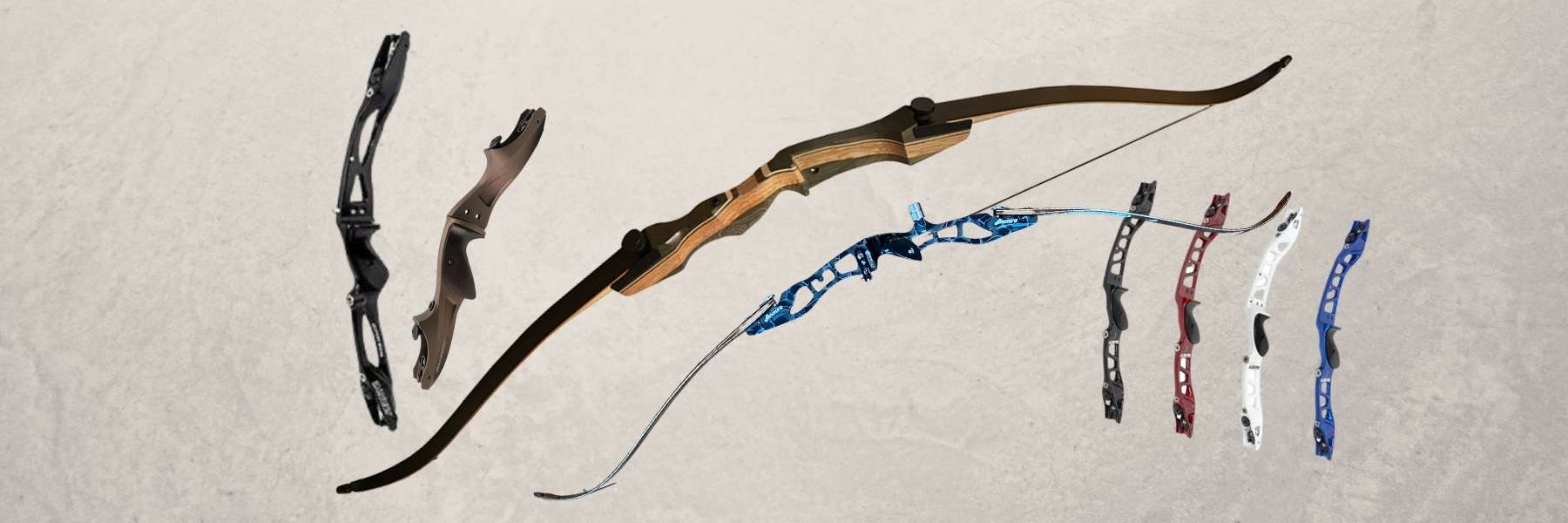






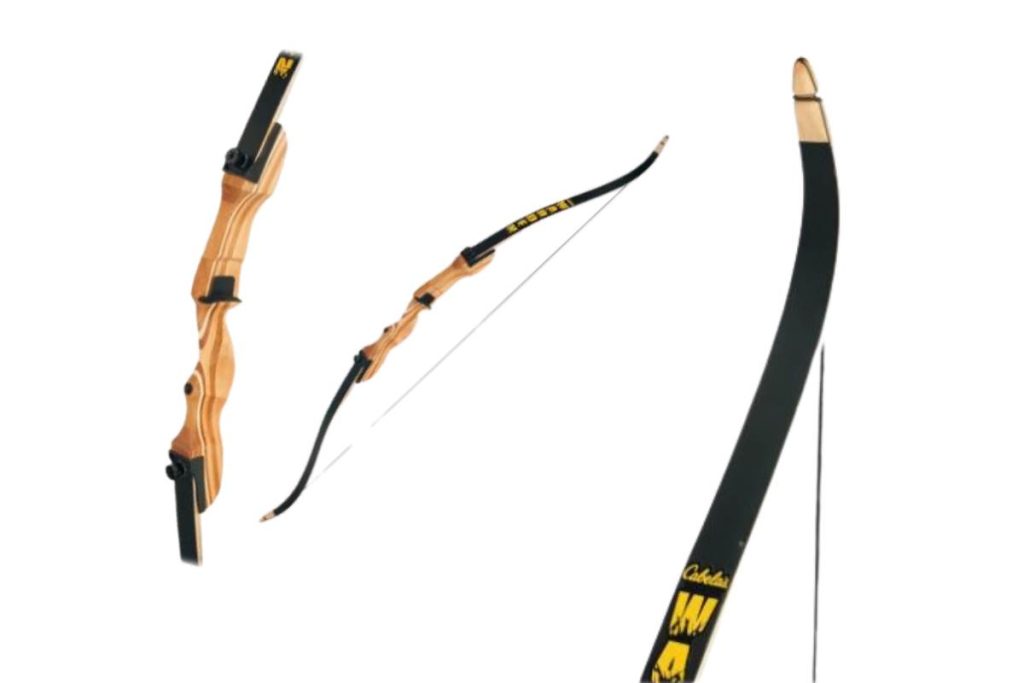



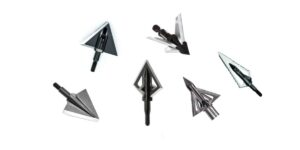
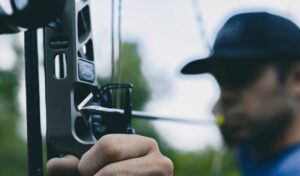
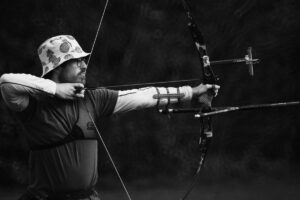
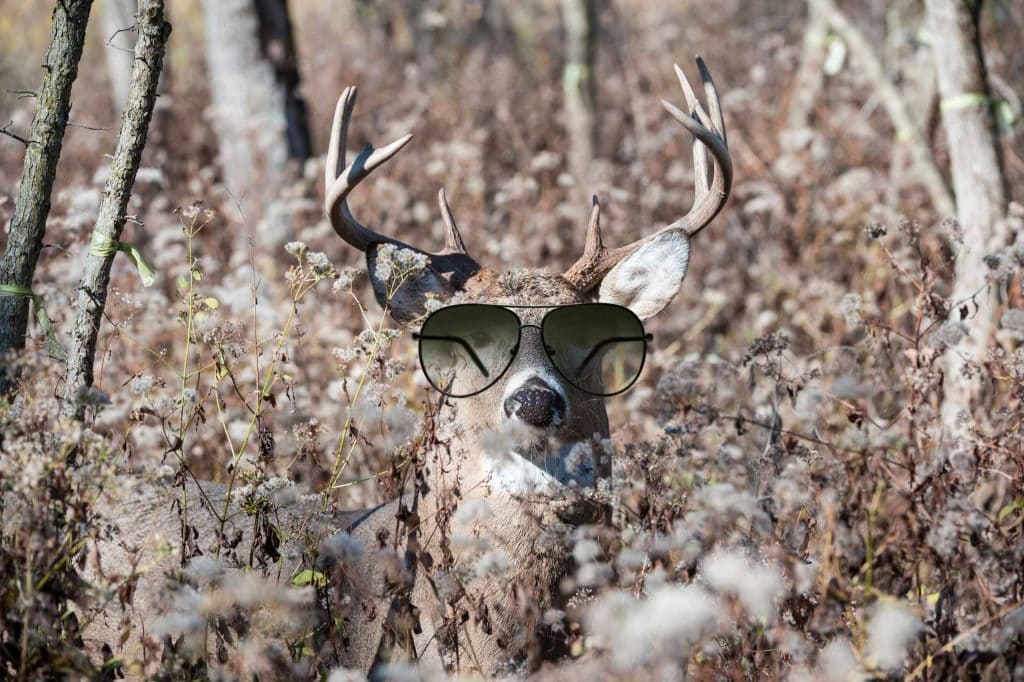
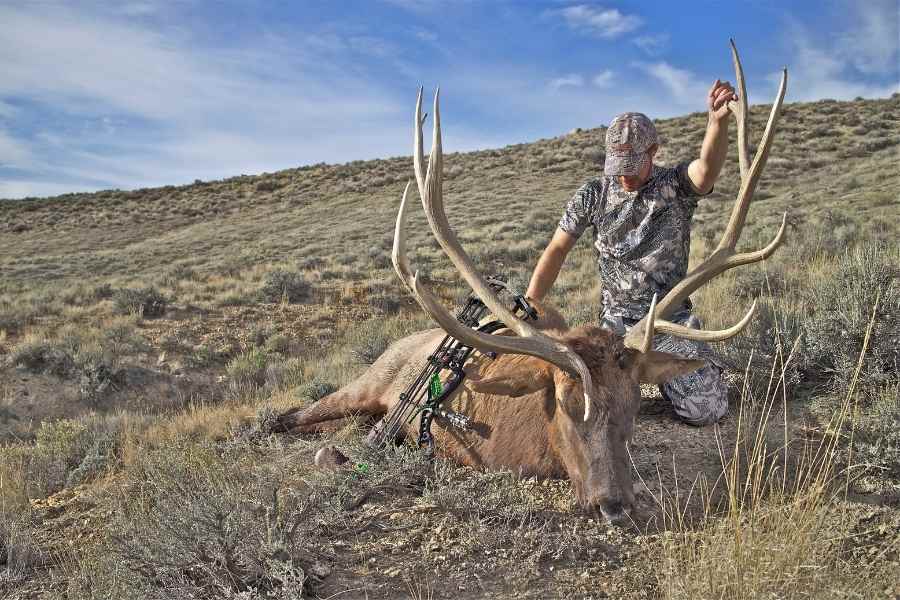
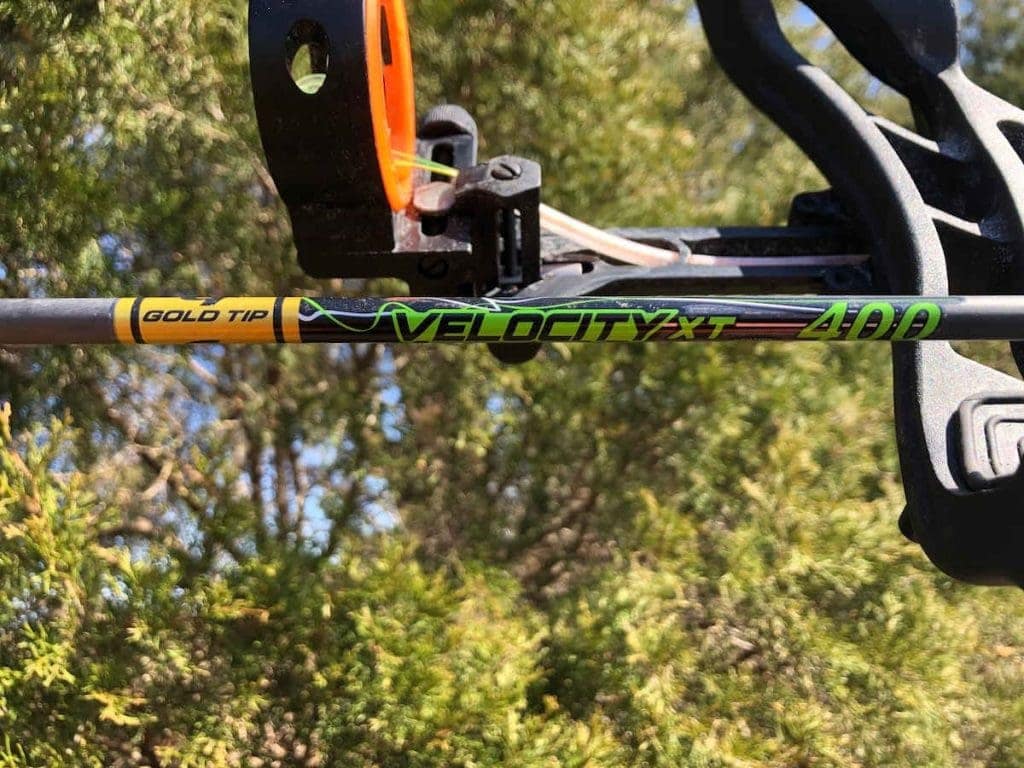
Conversation | 2 comments:
Hello Alex,
If I may call you that since you introduced yourself as such, I am interested in ascertaining whether or not you are familiar with the discontinued Nishizawa Takedown Recurve. In the 1980’s it had a price tag featuring the high hundreds ($700 to $800). In terms of quality, mass, and bi-handedness, which of today’s bows do you know to have similar or the same qualities?
Thank you, so much.
Continue to joy in your passion with archery.
Hey Cari,
Unfortunately I haven’t run accross this particular takedown, although it sounds intriguing. So I can recommend other bows could you tell me the model or any details as far as size, weight, limb pocket design, etc?